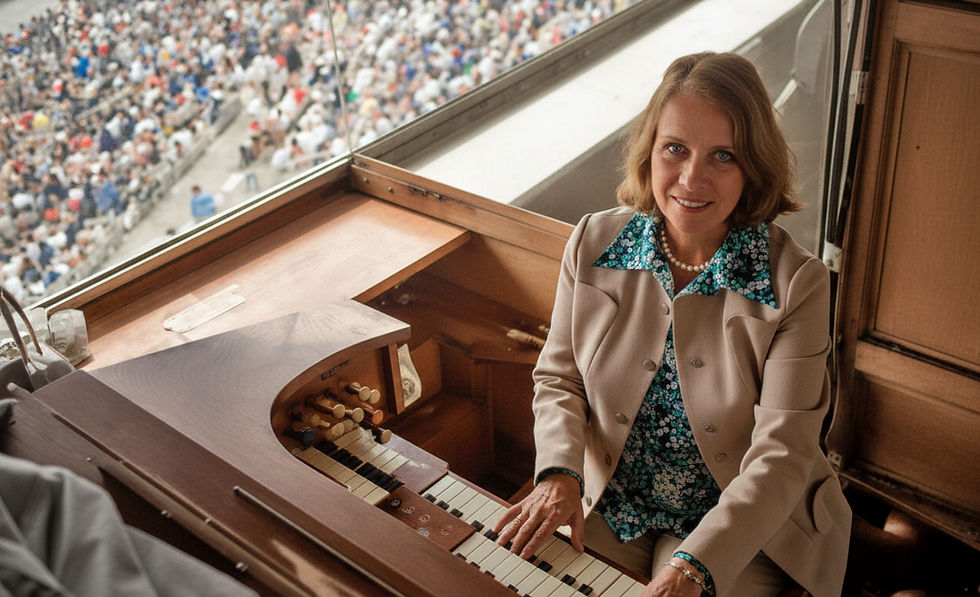Sunday School: Forgotten Faces of Flushing #36 : Randy Milligan: The Tidewater Titan Who Never Got His Turn
- Mark Rosenman

- Sep 7
- 3 min read

Welcome back to Sunday School: Forgotten Faces of Flushing, our weekly rummage through the Mets’ attic, where we brush aside the moth-eaten jerseys and dog-eared scorecards to rediscover the players who made you say, “Oh yeah… that guy!”
Last week, we revisited the polyester-and-pinstripes 1970s to remember Pepe Mangual, a speedster who came to Queens with promise, left with boos, and now lives mostly as a trivia answer.
This week, we fast-forward to the shoulder-padded, MTV 1980s , a decade when the Mets had more talent than they knew what to do with. Buried beneath that avalanche of stars was a first baseman who crushed minor league pitching, looked like a future middle-of-the-order thumper, and yet never got a real chance to stick in Flushing.
His name? Randy Milligan.
Drafted in the 3rd round in 1981 out of Arizona State, Milligan quickly established himself as the guy Mets fans read about in the farm reports and wondered, “When’s this guy coming up?”
By 1987, he wasn’t just good in the minors , he was dominant. Playing for Triple-A Tidewater, Milligan hit .326 with 29 homers and 103 RBIs, walked 103 times, and was named the International League MVP. He didn’t just lead the league he practically owned it. Norfolk locals probably considered renaming Harbor Park's Centerfield “Milligan's Middle” (see what I did there, get it ? Kiners Korner ?)

If this were any other franchise, Milligan would’ve been promoted and handed the keys to first base. But this was the mid-’80s Mets , a club stacked with All-Stars, a World Series trophy, and one Keith Hernandez sitting firmly at first. Trying to break into that lineup was like trying to cut into the front of the line at Citi Field on Juan Soto bobblehead night : good luck, buddy.

Milligan did make it to the big club in 1987, appearing in 29 games. But instead of being the slugger fans dreamed about, he hit just .220 with a lone home run ,a flicker of what he could do with regular at-bats. The Mets, in the thick of a pennant race, didn’t have the luxury of letting him figure it out.
By December, Milligan was out. The Mets traded him and minor-league pitcher Scott Henion to the Pittsburgh Pirates for catcher Mackey Sasser and pitcher Tim Drummond.

The deal actually worked for New York — Sasser became a beloved cult figure, known for his sweet lefty bat and, yes, his unforgettable yips when trying to throw the ball back to the pitcher. But in the exchange, the Mets gave up a slugger who just needed the right stage.
Milligan bounced briefly to Pittsburgh and then to Baltimore, where the stage finally cleared. By 1989, he was the Orioles’ everyday first baseman, and he showed the power and patience Mets fans had been promised: 20 homers, 84 RBIs, and a .261 average. He followed that up with several solid years, including a .265, 20-HR season in 1990 and a career-high .299 average in 1991.
For a time, Randy Milligan was exactly what the Mets could’ve used in their early ’90s decline: a reliable bat with pop and on-base skills. Instead, he was slugging in orange and black while the Mets were cycling through the Chris Donnels and Chico Walkers of the world.
Milligan’s Mets career lasted just 29 games. He’s remembered less for what he did in Queens and more for what he represented: the eternal “what if?” prospect. The guy who proved the hype was real, just not in a Mets uniform.
To diehard fans, his name sparks memories of a stacked farm system that couldn’t possibly fit everyone into Shea. To casual fans, he’s a shrug. And to trivia nerds? He’s the answer to the question: “Who did the Mets trade to get Mackey Sasser?”
Randy Milligan never became a superstar, but he carved out a solid big-league career, playing 11 seasons, hitting 70 home runs, and posting a career .820 OPS — not bad for a guy the Mets never quite had room for.
In Mets lore, though, he remains a Forgotten Face of Flushing: the Tidewater Titan who mashed in the minors, barely got his shot at Shea, and then proved his worth somewhere else.
And that, in its own way, is the beauty of these stories. Because the Mets aren’t just about Seaver, Piazza, and Wright. They’re also about the Randy Milligans — the prospects who made us dream, if only for a little while, before slipping through our fingers.




Comments